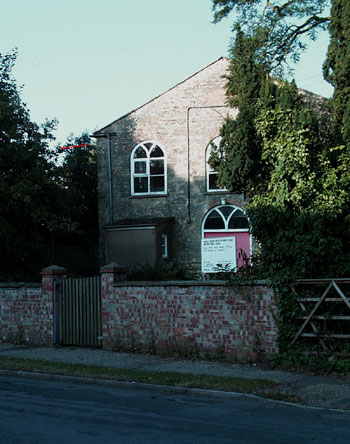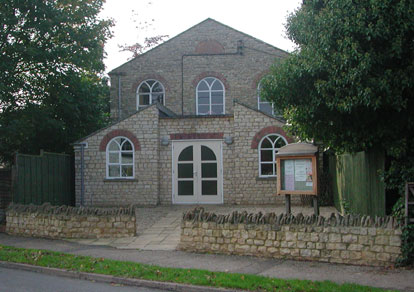The Chapel

Prior to the construction of the chapel in Chestnut Road the main non-conformist Sunday services were held in the chapel in Potterspury.
Sunday evening lectures were held in a cottage in Yardley Gobion. This was probably the cottage which is now 12 Moorend Road as for some years it had been occupied by the Warr family who were leading members of the Potterspury chapel.
There was a demand for larger accommodation and in 1826 a chapel was built in Chestnut Road at a cost of £368 4s 10½d. It was built on the site of two cottages. The pews were constructed by Geo. Weston and Son around 1870.
A Sunday School was formed and two services were held every Sunday. The number of services dwindled to one every Sunday afternoon and in the late 1980s there was the possibility of the chapel closing. However with an increase in numbers weekly Sunday morning services have been resumed together with an evening service on alternate Sundays.
Yardley Gobion can boast of a link, if somewhat tenuous, with the founding of the first missionary society, the Baptist Missionary Society. The founder of the Society, William Carey, a shoemaker from Paulerspury was led to Christ in 1783 by John Warr one of the Chapel family from Yardley, they had been apprentices together in Piddington near Hackleton. Details of Carey’s conversion and Warr’s involvement are well documented in Christian literature in particular in the book of Carey’s life and work by S. Pearce Carey.
At the age of 14, Carey’s father apprenticed him to a cordwainer in the nearby village of Piddington, Northamptonshire. His master, Clarke Nichols, was a churchman like himself, but another apprentice, John Warr, was a Dissenter. Through his influence Carey would eventually leave the Church of England and join with other Dissenters to form a small Congregational church in nearby Hackleton.
(This information About William Carey and John Warr – https://en.wikipedia.org/wiki/William_Carey_(missionary)
The chapel after renovations towards of end of the twentieth century,
this included the removal of the pews.
